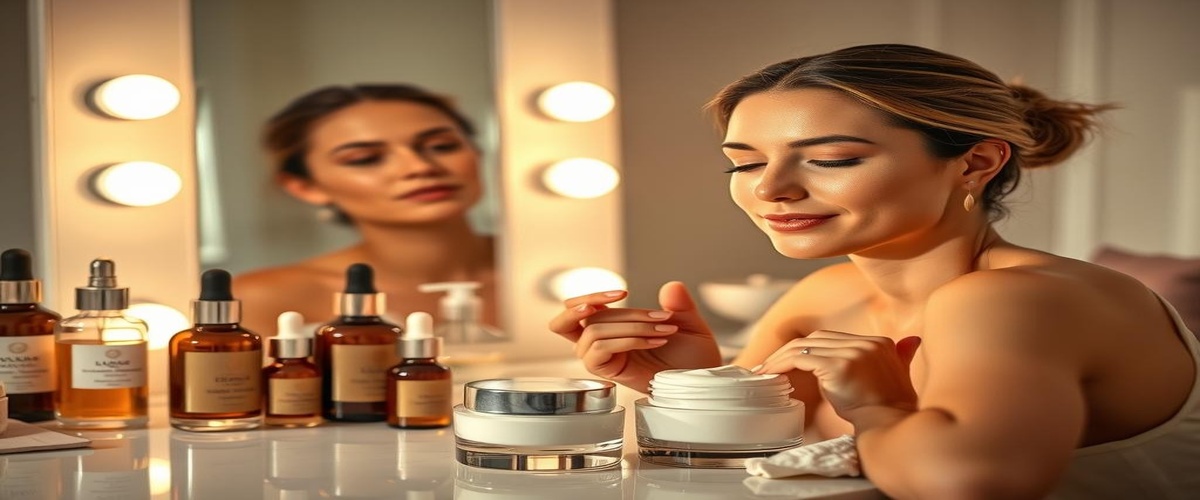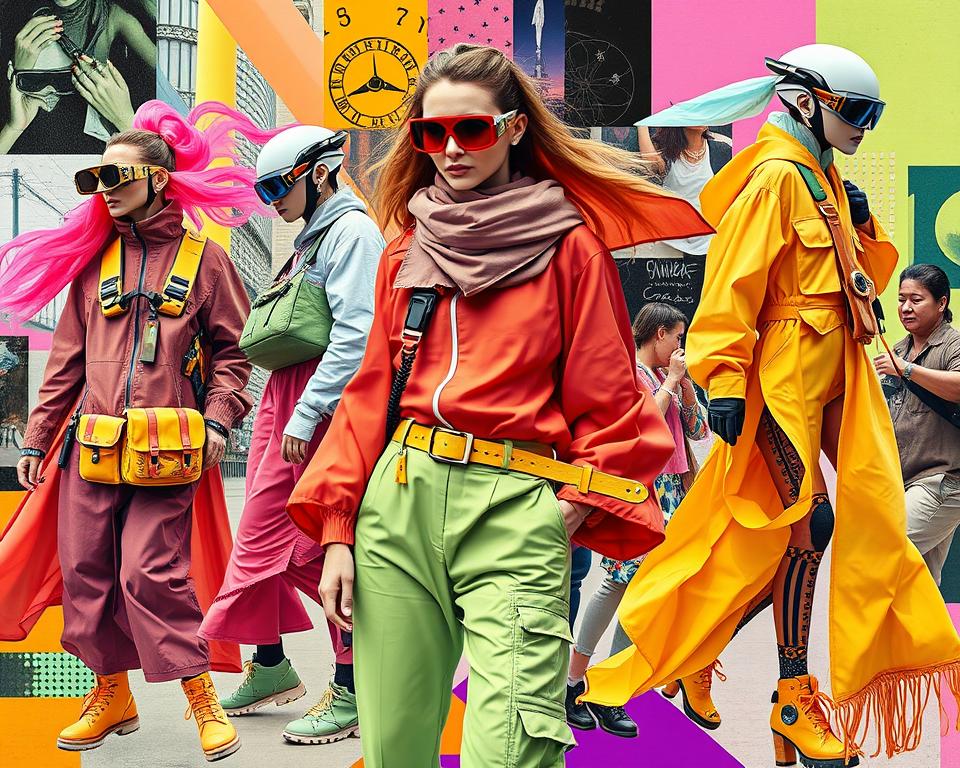Ever wondered why dark circles pop up after a late night, even when you're well-rested? These circles can make you look older and more tired than you feel. It's important to understand what causes them to find the right solutions.
In this guide, we'll share tips and natural remedies to fight dark circles. We'll cover skincare routines and lifestyle changes to brighten your eyes. Get ready to look younger and more refreshed.
Key Takeaways
- Dark circles can be influenced by genetics and lifestyle choices.
- Identifying dark circles vs. under eye bags is crucial for proper treatment.
- Hydration and specific ingredients in eye cream can significantly help.
- Natural remedies like cucumber and tea bags offer soothing effects.
- Improving sleep hygiene and diet can aid in reducing dark circles.
- Preventive habits such as using sunscreen are essential for maintaining youthful eyes.
Understanding Dark Circles and Their Causes
Dark circles are a common concern for many. They remind us of various underlying factors. Many things contribute to these shadows, from genetics to lifestyle choices. Knowing what causes dark circles is key to treating and preventing them.
Genetics and Hereditary Factors
Genetics play a big role in dark circles. Some people are more likely to have them because of their genes. Family history affects how skin looks, including pigmentation and elasticity, making dark circles more noticeable.
Environmental Influences
Many environmental factors can cause dark circles. Sun exposure, air pollution, and allergens can irritate the skin. This irritation can lead to changes in pigmentation and weaken the skin around the eyes, making dark circles more likely.
Lifestyle Choices Impacting Dark Circles
Lifestyle choices also affect dark circles. Poor sleep, smoking, and unhealthy diets can make them worse. Not getting enough sleep hurts skin health, while smoking and bad nutrition reduce blood flow, making dark circles darker. Changing your lifestyle can help improve thisIdentifying the Difference: Dark Circles vs. Under Eye Bags
It's important to know the difference between dark circles and under eye bags. Both can make your eyes look tired, but they have different signs and need different treatments.
Characteristics of Dark Circles
Dark circles show up as discoloration under your eyes. They can look bluish or purplish. Knowing this is key to treating them.
They can come from genetics, not enough sleep, or stress. Fixing these issues can help make dark circles less noticeable.
Understanding Puffy Eyes
Puffy eyes look swollen or puffy under your eyes. This makes you look tired. It's often due to fluid buildup or inflammation.
Things like allergies, not sleeping enough, or your lifestyle can make it worse. Spotting puffy eyes is crucial for finding the right treatment.
Skincare Routine to Combat Dark Circles
A good skincare routine is key to fighting dark circles. It's all about keeping your skin hydrated and choosing the right products. Eye creams with special ingredients are a must for anyone wanting to hide dark circles.
Importance of Hydration
Keeping your skin hydrated is crucial. It helps prevent dryness that makes dark circles worse. Drinking water and using hydrating eye creams can make your skin look fuller and shadows less noticeable.
Using hydrating products regularly can really make a difference. It keeps your eye area looking fresh and young.
Key Ingredients to Look for in Eye Creams
When picking the best eye creams, look for certain ingredients. You want ones with:
- Caffeine to shrink blood vessels and reduce puffiness.
- Hyaluronic acid for deep moisture and smoother skin.
- Peptides to boost collagen and firm the skin.
These ingredients help fight dark circles and improve the skin's health around your eyes.
Best Under Eye Creams Recommended by Dermatologists
Dermatologists recommend certain eye creams for dark circles. Brands like Neutrogena, Olay, and Clinique are top choices. They offer deep hydration and help reduce dark circles.
These products are great additions to your skincare routine. They make a big difference in how your under-eye area looks.
Natural Remedies for Dark Circles
Looking to reduce dark circles? Natural remedies can help. You can use common items like cucumber, tea bags, and DIY eye masks. These can make your skin around the eyes feel fresh and look better.
Cucumber and its Soothing Properties
Cucumber is great for cooling down tired eyes. It's full of water, which hydrates and refreshes. Just place cool cucumber slices on your eyelids for 10-15 minutes.
This not only reduces puffiness but also lightens dark circles. Cucumber's anti-inflammatory properties play a big role here.
Tea Bags as a Home Remedy
Tea bags, especially green and chamomile, are full of antioxidants. They help heal the skin. Cool them down, then put them on your closed eyes for 15 minutes.
The caffeine in them can make blood vessels smaller. This helps reduce darkness and puffiness.
DIY Eye Masks with Natural Ingredients
DIY eye masks are another way to tackle dark circles. Mix aloe vera gel with honey for a nourishing mask. Or, try mashed avocado with yogurt for vitamins and moisture.
Apply these masks for 20 minutes. They can make your under-eye area look refreshed and bright.
Beauty Tips for Brighter Eyes
Dark circles can make you look tired. Using makeup tricks can really help. The right concealer and how you apply it can make a big difference. It can make your eyes look brighter and younger.
Makeup Techniques to Conceal Dark Circles
There are special makeup tricks for dark circles. Begin with a brightening primer. It lights up the area and gets your makeup ready.
Then, use color-correcting concealers. Peach or orange ones are great for blue dark circles. Apply them softly with a sponge or your finger for a natural look.
Choosing the Right Concealer
Finding the right concealer is key. Look for one that matches your skin tone and is light and hydrating. Choose a shade that's a bit lighter than your foundation for a brightening effect.
Brands like NARS and Tarte have great options. They help you cover dark circles and keep your skin looking young.
How to Get Rid of Dark Circles: Lifestyle Changes
Making lifestyle changes is key to getting rid of dark circles. Focus on sleep hygiene and nutrition. These changes can greatly improve your skin health and make dark circles less noticeable.
Improve Sleep Hygiene
Getting a consistent sleep schedule is crucial. Try to go to bed and wake up at the same time every day. A relaxing bedtime routine can also help.
Reading a book, meditating, or taking a warm bath can signal it's time to sleep. Good sleep makes your skin look better and reduces dark circles.
Nutrition and Diet Adjustments
Your diet is important for your skin's health. Eating foods rich in vitamins C and K, and antioxidants, can boost your skin. Include fruits like oranges and berries for vitamin C, and leafy greens like spinach or kale for vitamin K.
Drinking plenty of water also helps keep your skin healthy. Dehydration can make dark circles worse.
Dark Circle Treatment Options
There are many ways to treat dark circles, each with its own benefits. Knowing what professional treatments are out there can help you choose the right one. These methods use advanced techniques to give lasting results.
Professional Treatments: What to Consider
When looking into professional treatments for dark circles, think about how well they work, how long it takes to recover, and any side effects. Some common treatments include:
- Chemical Peels: These use acids to remove the top skin layer, helping it regenerate and lighten.
- Laser Therapy: This uses light to target dark spots and improve skin texture.
- Dermal Fillers: Fillers like hyaluronic acid are injected to make the area under the eyes look fuller, hiding dark circles.
Talking to a professional can help you pick the best treatment for your skin. Each option has its own advantages and things to consider, so it's important to understand them well before starting.
When to Seek Dermatologist Advice
If you're worried about dark circles that won't go away, it's time to see a dermatologist. They can help you figure out the best treatment for your skin and what's causing the dark circles. You might need professional help if:
- Your dark circles are getting worse or won't go away: This could mean there's an underlying health issue or you need a more advanced treatment.
- You have other symptoms like swelling or discoloration: These need to be checked by a professional.
- You want a treatment plan that's just right for you: A dermatologist can give you advice based on your lifestyle and skin care habits.
Getting help from a medical expert can lead to safe and effective treatments that are right for you.
Preventing Dark Circles: Daily Habits to Adopt
Effective daily habits can help prevent dark circles under the eyes. Protecting your skin and staying hydrated are key. They help keep your skin looking fresh and youthful.
The Role of Sunscreen
The skin around your eyes is very delicate. Using a broad-spectrum sunscreen daily is crucial. It protects against harmful UV rays and prevents dark circles by reducing skin damage.
Choose a lightweight, non-irritating sunscreen for sensitive areas. Apply it every morning as part of your skincare routine.
Staying Hydrated and Moisturized
Drinking enough water is essential for healthy skin. It keeps your skin elastic and full of life. Using a good moisturizer is also important.
Keep the under-eye area moisturized to keep it plump and elastic. Look for products with hyaluronic acid and peptides. These daily habits help fight dark circles.
Conclusion
Getting bright eyes and a youthful look starts with knowing why dark circles happen. A good skincare routine can help a lot. It's important to know about genetics, the environment, and lifestyle choices.
There are many ways to tackle dark circles, from professional treatments to home remedies. The key is to be consistent. Choosing the right products and habits can make a big difference in your under-eye area.
By adopting the right practices, you can have brighter eyes and feel more confident. Making smart lifestyle choices can give you a refreshed and vibrant look. A balanced approach is crucial in fighting dark circles and achieving the youthful look you want.
FAQ
What causes dark circles under the eyes?
Dark circles can come from genetics, not sleeping enough, smoking, and a bad diet. Sun exposure and allergies also play a part.
How can I reduce dark circles naturally?
To naturally reduce dark circles, try using cucumber slices for their calming effect. Tea bags, especially green or chamomile, can also help. You can make your own eye masks with aloe vera and honey.
Which are the best under eye creams recommended by dermatologists?
Dermatologists recommend creams with caffeine, hyaluronic acid, and peptides. Brands like Olay, Kiehl's, and Neutrogena have products that fight dark circles and puffy eyes.
How can makeup help conceal dark circles?
Makeup tricks like using a brightening primer and color-correcting concealers can hide dark circles. It's key to pick the right concealer shade and type for a natural look.
What lifestyle changes can help prevent dark circles?
To prevent dark circles, get enough sleep and eat a balanced diet rich in vitamins and antioxidants. Drinking plenty of water is also important.
When should I consider professional treatments for dark circles?
If home and over-the-counter treatments don't work, think about professional treatments. Chemical peels, laser therapy, or fillers can offer quick and noticeable results.
How important is sunscreen in preventing dark circles?
Sunscreen is very important for the skin under your eyes. It protects against UV damage, which can make dark circles worse and cause early aging.
Are there any specific dietary adjustments that can help with dark circles?
Yes, eating more vitamin C, vitamin K, and antioxidants can help your skin. This may reduce the look of dark circles.







.jpeg)
.jpeg)
.jpeg)
.jpeg)
.jpeg)
.jpeg)
.jpeg)
.jpeg)
.jpeg)
.jpeg)
.jpeg)
.jpeg)



.jpeg)
.jpeg)
.jpeg)
.jpeg)


~2.jpg)
~2.jpeg)